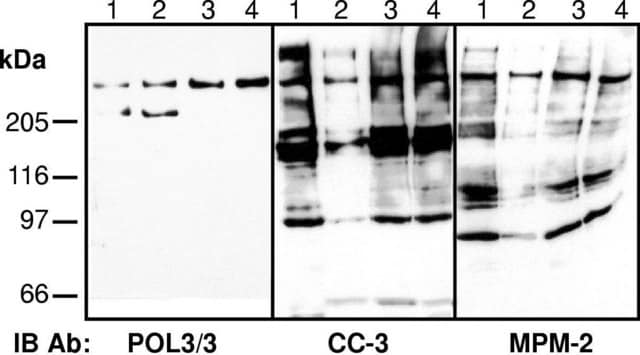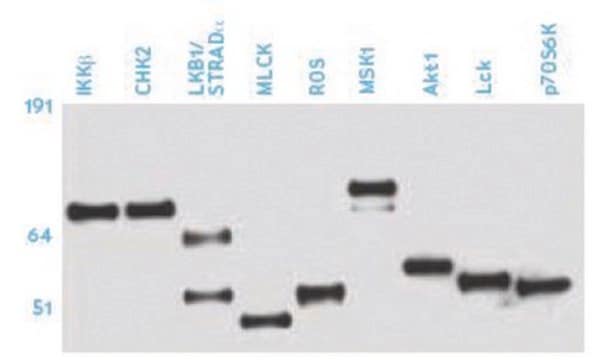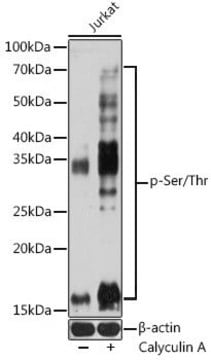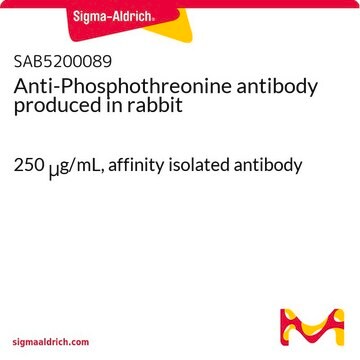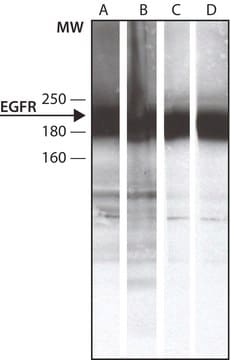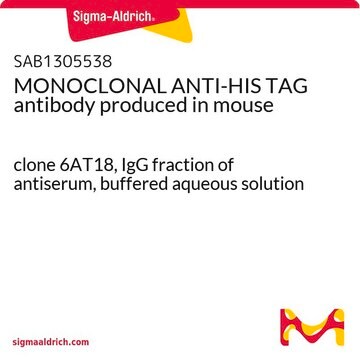P5747
Monoclonal Anti-Phosphoserine antibody produced in mouse
clone PSR-45, purified immunoglobulin, buffered aqueous solution
Synonym(s):
Monoclonal Anti-Phosphoserine, Phospho Ser, Phospho serine, Phospho−Ser, Phospho−serine
About This Item
Recommended Products
biological source
mouse
Quality Level
conjugate
unconjugated
antibody form
purified immunoglobulin
antibody product type
primary antibodies
clone
PSR-45, monoclonal
form
buffered aqueous solution
packaging
antibody small pack of 25 μL
concentration
~2 mg/mL
technique(s)
dot blot: suitable
indirect ELISA: 0.3-0.6 μg/mL using phosphoserine conjugated to BSA
microarray: suitable
western blot: 2.5-5.0 μg/mL using total rat brain extract.
isotype
IgG1
shipped in
dry ice
storage temp.
−20°C
target post-translational modification
unmodified
Looking for similar products? Visit Product Comparison Guide
Related Categories
Specificity
Immunogen
Application
Western Blotting (1 paper)
Biochem/physiol Actions
Physical form
Disclaimer
Not finding the right product?
Try our Product Selector Tool.
related product
Storage Class Code
10 - Combustible liquids
WGK
nwg
Flash Point(F)
Not applicable
Flash Point(C)
Not applicable
Certificates of Analysis (COA)
Search for Certificates of Analysis (COA) by entering the products Lot/Batch Number. Lot and Batch Numbers can be found on a product’s label following the words ‘Lot’ or ‘Batch’.
Already Own This Product?
Find documentation for the products that you have recently purchased in the Document Library.
Customers Also Viewed
Our team of scientists has experience in all areas of research including Life Science, Material Science, Chemical Synthesis, Chromatography, Analytical and many others.
Contact Technical Service




